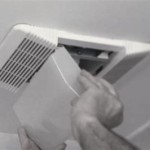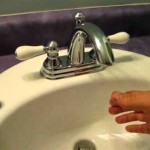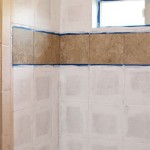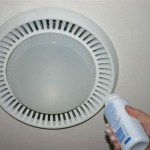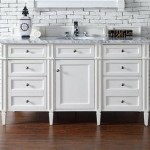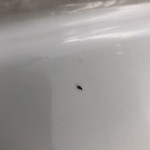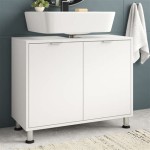Bathroom Sink Faucet Hose Adapter: A Comprehensive Guide
The bathroom sink faucet hose adapter, a seemingly insignificant component, plays a crucial role in connecting the faucet to the water supply lines. Understanding the different types of adapters, their functionality, and the importance of proper installation is essential for both plumbing professionals and homeowners undertaking DIY plumbing projects. This article provides a comprehensive overview of bathroom sink faucet hose adapters, covering various aspects from material composition to troubleshooting common issues.
The primary function of a faucet hose adapter is to bridge the gap between the faucet's tailpiece and the water supply lines. Faucet tailpieces are typically threaded, allowing for a secure connection. However, the threading and size may not always directly match the standard plumbing fittings used for water supply lines. This is where the adapter comes into play, providing a transition between different thread sizes and types. Without a suitable adapter, a direct connection would be impossible, leading to leaks and potential water damage.
Adapters also offer flexibility in plumbing configurations. They allow for the use of flexible supply lines, which are easier to maneuver in tight spaces compared to rigid pipes. This is particularly useful in older homes or bathrooms with complex plumbing layouts. By using an adapter, connecting the faucet becomes a more manageable task, reducing the risk of damaging existing pipes or fittings.
Types of Bathroom Sink Faucet Hose Adapters
A variety of faucet hose adapters are available, each designed for specific applications and plumbing configurations. Understanding these different types is crucial for selecting the correct adapter for a particular installation.
Compression Adapters: These adapters use a compression fitting to create a watertight seal. A compression ring, typically made of brass or plastic, is compressed onto the pipe as the nut is tightened. Compression adapters are commonly used to connect copper or PEX tubing to the faucet tailpiece. They are relatively easy to install and do not require soldering or welding.
Threaded Adapters: Threaded adapters rely on matching threads to create a secure connection. These adapters can be male-to-male, female-to-female, or male-to-female, depending on the threading of the faucet tailpiece and the water supply line. Pipe thread sealant or Teflon tape is essential to ensure a watertight seal with threaded connections.
Push-Fit Adapters: Push-fit adapters offer a quick and easy connection without the need for specialized tools. These adapters utilize internal teeth that grip the pipe when it is pushed into the fitting. A release tool is required to disconnect the pipe. Push-fit adapters are commonly used with copper, CPVC, and PEX tubing.
Flare Adapters: Flare adapters create a metal-to-metal seal by flaring the end of the tubing and connecting it to the adapter with a flare nut. These adapters are typically used in applications where a high level of reliability and resistance to vibration is required. Flaring tools are necessary to properly prepare the tubing for connection.
Reducing Adapters: These adapters are used when the faucet tailpiece and the water supply line have different thread sizes. The adapter reduces the size of one thread to match the other, allowing for a secure connection. These are invaluable when dealing with mismatched plumbing components.
The choice of adapter depends on factors such as the material of the water supply lines, the type of faucet, and personal preference. For instance, if connecting a faucet with a ½-inch male threaded tailpiece to a 3/8-inch compression valve, a ½-inch female threaded to 3/8-inch compression adapter would be necessary.
Materials Used in Faucet Hose Adapters
The material composition of a faucet hose adapter is crucial for its durability, resistance to corrosion, and overall performance. Common materials include brass, stainless steel, and plastic.
Brass: Brass is a widely used material due to its resistance to corrosion, durability, and ease of machining. Brass adapters are suitable for most water supply applications and are known for their longevity. However, some brass alloys may contain lead, which can be a concern for potable water systems. Lead-free brass options are available and often required by plumbing codes for drinking water applications.
Stainless Steel: Stainless steel offers excellent corrosion resistance and is a durable option for faucet hose adapters. It is particularly suitable for areas with hard water or corrosive water conditions. Stainless steel adapters are also resistant to high temperatures and pressures, making them a reliable choice for demanding applications.
Plastic: Plastic adapters are typically made from PVC (polyvinyl chloride) or CPVC (chlorinated polyvinyl chloride). These materials are lightweight, corrosion-resistant, and relatively inexpensive. Plastic adapters are suitable for cold water applications but may not be suitable for high-temperature or high-pressure systems. CPVC adapters offer better temperature resistance compared to PVC.
Chrome-Plated: Some adapters are made of brass or other metals and then chrome-plated for aesthetic purposes. The chrome plating provides a shiny finish and adds a layer of protection against corrosion. However, chrome plating can be susceptible to scratches and damage over time.
The selection of adapter material should be based on the specific application, water quality, and applicable plumbing codes. For drinking water systems, lead-free materials are essential to ensure the safety of the water supply.
Installation and Maintenance of Faucet Hose Adapters
Proper installation and regular maintenance are essential for ensuring the long-term performance and reliability of faucet hose adapters. Following the manufacturer's instructions and adhering to best plumbing practices can prevent leaks and other issues.
Installation Steps:
1. Turn off the water supply: Before starting any plumbing work, turn off the water supply to the faucet at the shut-off valves located under the sink.
2. Remove the old adapter (if applicable): If replacing an existing adapter, carefully disconnect it from the faucet tailpiece and the water supply line.
3. Clean the threads: Clean the threads on the faucet tailpiece and the water supply line to ensure a proper seal. Use a wire brush or a thread cleaning tool to remove any debris or corrosion.
4. Apply thread sealant or Teflon tape: Apply thread sealant or Teflon tape to the male threads of the adapter or faucet tailpiece. Wrap the tape in the direction of the threads, overlapping each layer slightly.
5. Connect the adapter: Carefully thread the adapter onto the faucet tailpiece and the water supply line. Tighten the connections using a wrench, but avoid over-tightening, which can damage the threads or the adapter.
6. Check for leaks: After installing the adapter, turn on the water supply and check for leaks at the connections. If leaks are present, tighten the connections slightly or reapply thread sealant or Teflon tape.
Maintenance Tips:
1. Inspect regularly: Periodically inspect the faucet hose adapters for signs of corrosion, leaks, or damage.
2. Tighten connections: If you notice any leaks, tighten the connections slightly using a wrench.
3. Replace when necessary: If the adapter is damaged or corroded, replace it with a new one to prevent leaks and ensure proper water flow.
4. Use appropriate tools: Use the correct tools for the job to avoid damaging the adapter or the surrounding plumbing components.
5. Avoid harsh chemicals: Avoid using harsh chemicals or abrasive cleaners on the adapter, as they can damage the finish or the material.
Proper installation and maintenance can significantly extend the lifespan of faucet hose adapters and prevent costly plumbing repairs. If unsure about any aspect of the installation process, it is always best to consult a qualified plumber.
Understanding the intricacies of bathroom sink faucet hose adapters enables informed decision-making when selecting and installing these critical plumbing components. Choosing the right adapter material, thread type, and installation technique are essential for a long-lasting, leak-free connection. Regular maintenance and inspection contribute to the overall integrity of the plumbing system.

Sink Faucet Valve Diverter To Bidet Hose Adapter Kitchen Bathroom Shower

Tinksky 1 Set Faucet Hose Adapter Home Sink Washing Machine Splitter Com

Tinksky 1 Set Faucet Hose Adapter Home Sink Washing Machine Splitter Com

Faucet Connector For The Lavario Portable Manual Washing Machine Clothes Washer

5pcs Faucet Adapter Kit Brass Aerator Set Sink Connecting Garden Hose Water Filter Standard Through Diverter Home Kitchen Temu Italy

Universal Sink Valve Diverter Faucet To Hose Adapter For Kitchen Bathroom Shower

Garden Hose Adapter With Aerator Sink Faucet To For Female Male Brass Thicker Connection Bathroom Accessories Chrome Plated Temu Latvia

Walfront Bathroom Kitchen Basin Sink Faucet Splitter Diverter Valve To Hose Adapter M24 Com

Qifei Faucet Diverter Valve Sink To Washing Machine Hose Adapter For Bathroom Kitchen Connection Portable Dishwasher Silver Com
Related Posts
